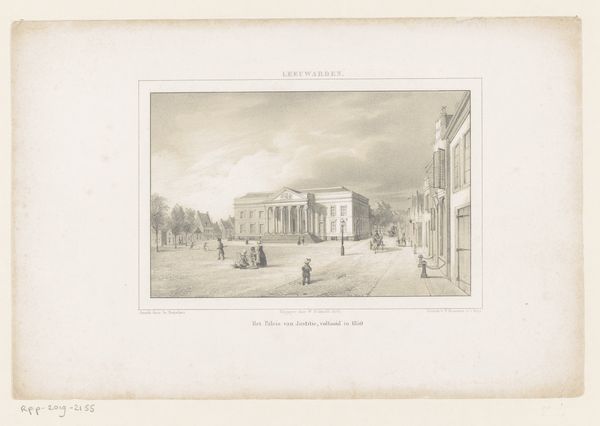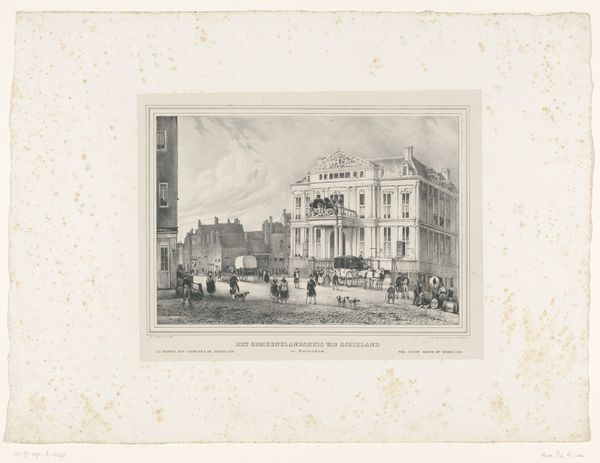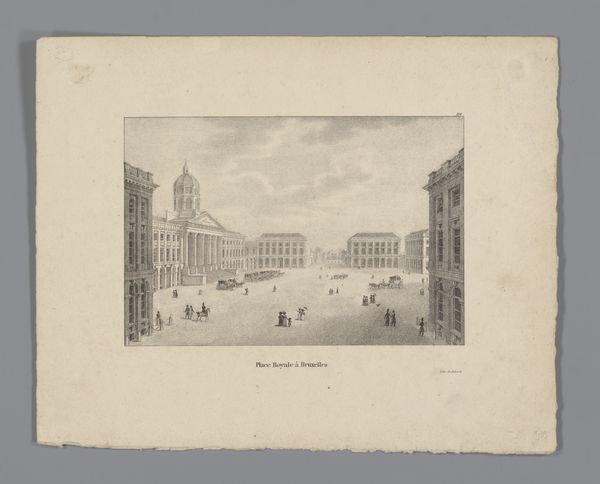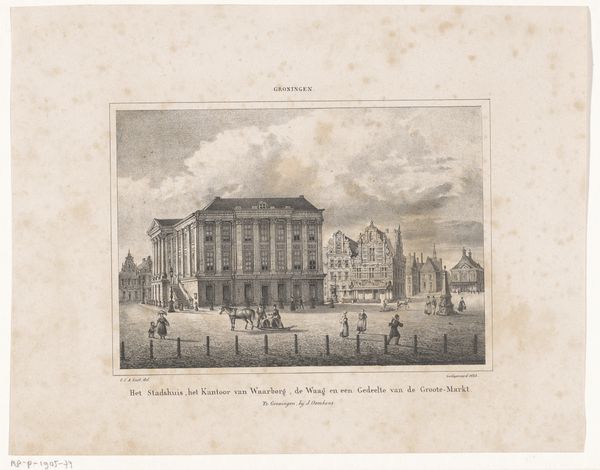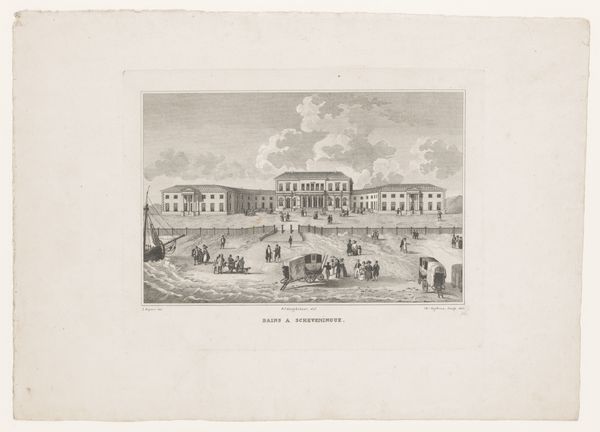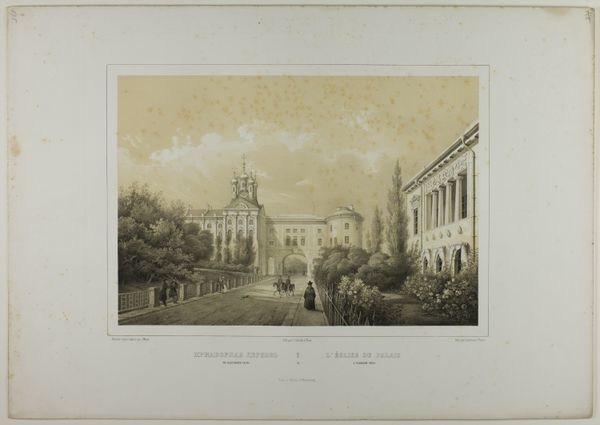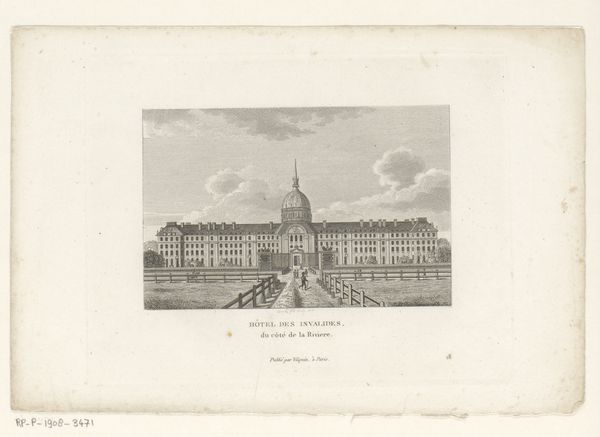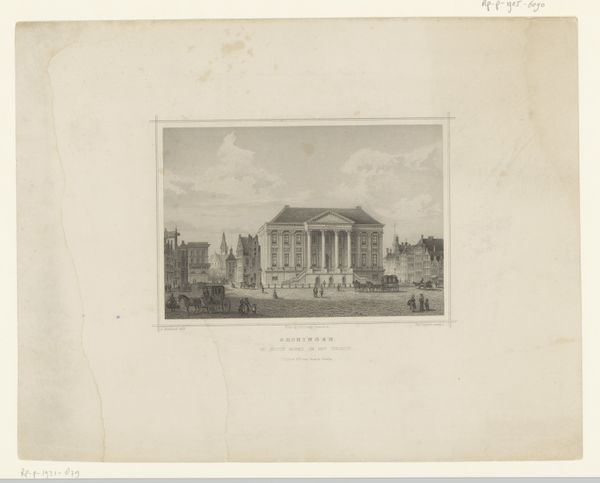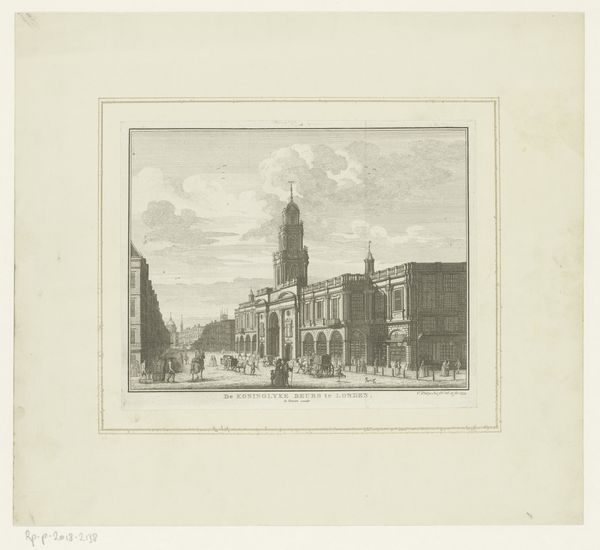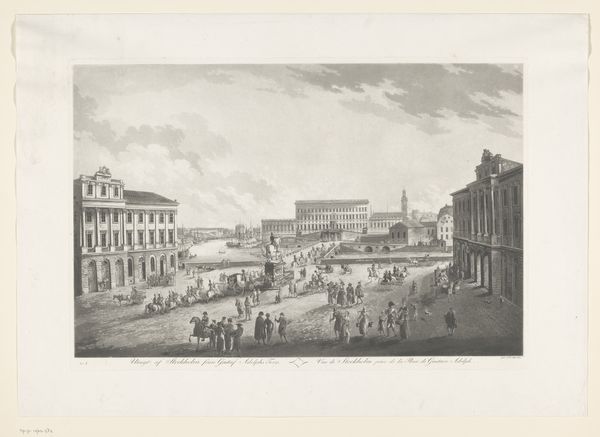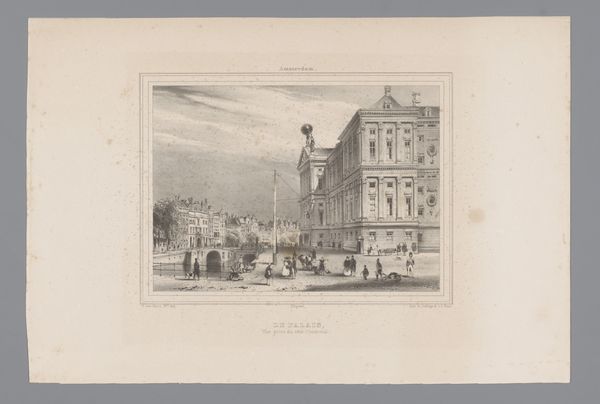
print, engraving
#
neoclacissism
# print
#
cityscape
#
engraving
#
realism
Dimensions: height 146 mm, width 220 mm
Copyright: Rijks Museum: Open Domain
Editor: This engraving, "Gezicht op het Koninklijk Paleis te Brussel" from between 1800 and 1875, attributed to A. Cruse, it’s such a formal, almost idealized depiction of the city square. What symbolic weight do you think a scene like this would carry for viewers of the time? Curator: It is interesting how the artist uses visual order and controlled perspective to present Brussels. Think of Neoclassicism. Can you sense in this organization a yearning for stability, an assertion of power, or a memory of empires past? Consider also that many such squares featured equestrian statues or obelisks, symbols asserting secular leadership and control of knowledge, of access, or authority. Editor: That's fascinating. It’s as if the artist is not simply portraying a physical place, but also encoding a particular societal ideal into the image. Do the figures in the square offer any counterpoint to that idea of imposing order? Curator: Precisely! Notice the human element against that backdrop of strict geometry. Observe how these people interact in the foreground. They become almost performative against the setting. How do these elements combine in a cultural memory for Belgium? Editor: It creates a kind of dialogue, doesn’t it? A dance between civic identity and daily life, which is echoed formally with architecture balanced against its inhabitants. Thank you, I now look at it differently. Curator: Absolutely. What new paths of discovery will be built into that square of art is what I wonder.
Comments
No comments
Be the first to comment and join the conversation on the ultimate creative platform.

